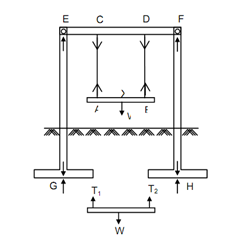Basic Concepts of Stresses and Strains
Rigid and Deformable Solids
The subject matter of Strength of Materials is also study under the title Applied Mechanics, and Mechanics of Solids. Applied Mechanics is the common title in which Solid Mechanics and Fluid Mechanics are branches. What we study in Strength of Materials is the effect of forces acting on solids of different geometrical & elastic properties, and therefore more people now select to call it Solid Mechanics.
Now Let us learn two terms utilized to describe two types of solids. A rigid solid is one which does not undergo any change in its size or shape and geometry. Alternatively, a deformable solid is one in which change in shape, size or both will take place when it is subjected to a force. The geometrical changes generates are called deformations and therefore the name deformable solid. Several of the common solid articles we handle in our day-to-day life exhibit perceptible deformations while subjected to loads. In many other solids, though we might not perceive any deformations with our naked eye, with measuring instruments of enough precision we might see that they also get deformed under applied forces. A more careful scrutiny shall reveal that all of solids are deformable and the idea of rigid solids is merely a conceptual idealisation.
Look at the common swing illustrated in Figure, which you would have enjoyed playing with throughout your earlier days. When a child sits on the swing we might not perceive any appreciable deformations. However if the iron bars be replaced though bamboo sticks & the iron chain be replaced by rubber strings, we might observe considerable deformations as shown in given Figure. We might then conclusively say that whenever forces are applied on solids, deformations are introduced in them. All solids are deformable solids; for this reason, the subject which once was called as Mechanics of Deformable Solids is now simply called as Mechanics of Solids.

You might wonder as to why we might have the term rigid solid at all, if in realism, there are no such solids. It has been already indicated that the term rigid solid is just a conceptual idealisation. There are a few significant uses for such idealization. Let the analysis of forces in the members of some plane trusses. You were specified the geometry of a structure (which in its entirety may be let as a solid of complex geometry) on which some forces have been presented to work. While analyzing these structures (solids) for discover out the member forces, the forces in the members have been resolved into their horizontal & vertical components, letting that the member orientations have not changed because of the application of external forces. In actuality, the orientations of mostly members modified, like the structure deforms under the loads.
Though, these deformations and therefore, the resulting changes in member orientations are so small that the error in computed member forces is negligibly small. You might think that even these errors might be eliminated by taking into account the deformations too. But an attempt to do thus shall reveal the complication of the calculations involved. The corrections hence effected are called as secondary effects and might be neglected in mostly cases. In the analysis of other types of structures also while the entire equilibrium is considered the entire structure or any part under consideration might be treated as a rigid solid.